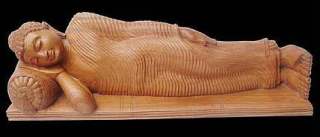As a fairly extreme addict of zazen and of shikantaza (“just sitting”) in particular, spending most of 2020 unable to sit up for more than a few minutes due to Long Covid meant that the mechanics of my practice needed to change. One option might have been to stop sitting but that somehow never occurred to me; my addiction necessitates twice daily ‘sitting’ at least. Instead, my “just sitting” became “just lying”. Now that I can again sit up to sit, at least for my evening dose, it feels like a good time to reflect on the differences and similarities and how this might have changed my practice.
I have some previous experience of “just lying”. As well as occasional periods when my Meniere’s symptoms mean I have to lie down as the world spins around me to avoid falling, I have sporadic but intense migraines which medication does little for. My approach in recent years has been to surrender the day to them, lying in a quiet, darkened room to just allow it all and notice the pains and nausea grow, shift and in time pass. The similarity between that and my approach in shikantaza, combined with my reduced ability to string a thought together during a migraine means that these migraines have often served as an open door for any difficult sitting I might have been avoiding. Often I’ve emerged from these migraines with some old wound or pattern feeling at least partly lifted, so much so that if I have a migraine without any difficult stuff arising at the same time it almost feels like a wasted opportunity. Those previous spells of “just lying” were short-term and I knew they would pass. This time it lasted for months with no guarantee that it would end.
I’m used to explaining the traditional meditation postures to newcomers to StoneWater Zen and explaining the benefits of those postures such as the stable base and straight spine. I continued to do this in online introduction sessions this year. To avoid feeling a total hypocrite, I explained why I’d need to lie down myself for the meditation part of those sessions. I still see the upright postures as the ‘ideal’, at least for the theoretical ‘ideal’ body, but recently I’ve learned very viscerally that the ideal posture can be very individual and that the best posture for each person is one that works with their body as it is at the time. This isn’t an ‘excuse’ to lie down instead of sitting just because we want to. In my experience, the further our posture is from the traditional, the more difficult it is for it to still feel and serve as zazen, the more determined I need to be not to be distracted back to my usual habitual patterns of thinking. I’d encourage anyone who can to do their zazen seated upright but now know that it’s perfectly possible to practise when that isn’t an option.*
My lying-down sitting is on my side with my spine as aligned as is practical. It feels less active and energised but there is more contact with the ground, more of a sense of the body easing into it, less of a sense of a “me” doing something and more of an easy surrender. That has made it perfect for exploring darker aspects of myself and my life, deeply engrained patterns and assumptions, previously suppressed fears and other emotions, anything I’d previously have been able to push out of sight.
Although I might have expected an increased risk of falling asleep, I’ve not experienced that; I’ve found lying-down sitting more likely to take over my sleep time than the reverse. If falling asleep feels like a problem, Darlene Cohen’s Turning Suffering Inside Out outlines a wide range of adapted meditation postures for people with physical pain and illness including two lying down postures designed to maintain a degree of focus and tension.
My amended sitting has helped me face the realities of life in this period. It’s been no less powerful or effective. There is a different feel and tone to lying meditation, at least for me. Sitting with the recommended balanced and stable posture does help us rediscover our mental balance and stability; sits with an energised clarity are more likely for me when I’m upright on my cushion. But that isn’t for me the only type of useful sit and the potential downsides of sitting lying down can also become its strengths. I think this year has only deepened my sitting addiction but this time with complete confidence that ‘sitting’ in some form is possible in any body no matter how weak or in pain it may be. Indeed, that may be when sitting is most needed. It was for me.
*(How firmly embedded the idea that we sit upright is in meditation culture was reinforced for me when I looked for an image for this piece. Google images has many pictures of people sitting in perfect mediation postures on a cushion but the only images I could find of lying down meditation were reclining buddha statues).

